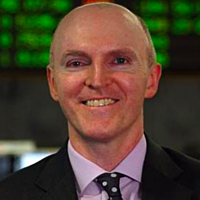The RBA's roadmap to QE

Westpac Bank
RBA Governor Lowe’s speech this week did not disappoint. He reiterated the bank’s upbeat outlook for the Australian economy but clarified how the RBA would approach unconventional monetary policy, should it be needed.
We have already heard on multiple occasions that “negative interest rates in Australia are extraordinarily unlikely.” But there was plenty new in Governor Lowe’s discussion of quantitative easing or QE. First was his clarification that “QE becomes an option to be considered at a cash rate of 0.25 per cent, but not before that.”
Westpac’s estimate of the effective lower bound for the RBA cash rate had been 0.5%, so we take this on board. The composition of any RBA QE program was also very notable – the Bank has “no appetite to undertake outright purchases of private sector assets.” We had thought they might consider purchases of residential mortgage-backed securities.
But it turns out the RBA has a philosophical problem with such public involvement in private markets which for example the Bank of Japan, European Central Bank and Bank of England do not. So now we know.
In response to the speech, markets priced in greater risk of further RBA easing next year. Governor Lowe trod a careful line between keeping an easing bias to help prevent Aussie dollar appreciation and their economic growth forecasts which mean that QE is “not on our agenda at this point in time.”
Westpac remains more pessimistic than the RBA about the prospects for Australian growth and unemployment over the next 2 years and now expects an additional cash rate cut, to 0.25% in June next year and commencement of a QE program in the second half of 2020.
Governor Lowe’s balanced speech matches the modest response on AUD/USD, which is only slightly lower over the week. FX options markets imply the quietest year ahead for the Aussie since mid-2007. Of course, that pricing proved to be wildly inaccurate as the global financial crisis hit in 2008.
While Australia’s market focus was on the RBA this week, economic data should be the main driver in the week ahead. The highlight is Q3 GDP. Recall that Australia’s economy grew just 1.4% over the year to June, the slowest pace since 2009.
More favourable base effects should ensure that the annual pace picks up a bit in Q3 but growth overall still looks soft, with Westpac expecting a 0.6% quarterly rise, 1.8% over the year. Risks to this forecast seem tilted to the downside given weak updates on Q3 business investment and residential construction this week.
We will also see October data on Australian retail sales, building approvals and the trade balance. The RBA Board meets on Tuesday, with only about a 10% chance of a rate cut still priced in. Westpac’s call for a February 2020 rate cut is about 70% priced.
Internationally, the outlook for the Fed and ECB is quite stable, leaving most attention on US-China trade negotiations. While Beijing expressed anger after President Trump signed the Hong Kong Human Rights and Democracy Act and threatened retaliation, both Chinese and US officials insist that a phase one trade deal is close at hand. However if the mood cools further, the Aussie dollar would risk fresh multi-week lows in the week ahead.
3 topics

Sean Callow is Westpac Bank's Senior Currency Strategist, based in Sydney. Sean focuses on the Australian dollar and other G10 and Asian currencies. He has worked in strategy and economics roles in New York, London, Singapore and Melbourne.
Expertise

Sean Callow is Westpac Bank's Senior Currency Strategist, based in Sydney. Sean focuses on the Australian dollar and other G10 and Asian currencies. He has worked in strategy and economics roles in New York, London, Singapore and Melbourne.
